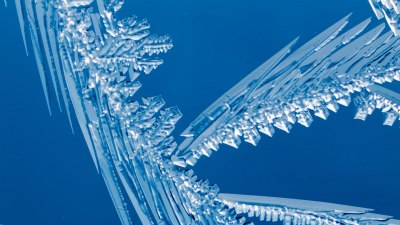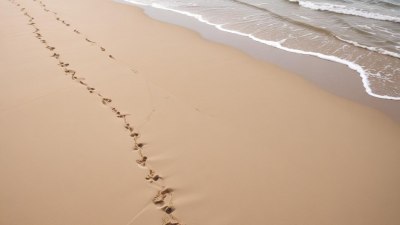How the Shape of Ice Crystals Predicts the Type of Snowfall
Explore how ice crystal shapes influence snowfall types and their significance in meteorology.

The intricate dance of snowflakes as they fall to the ground is not only a beautiful aspect of winter but also a fascinating subject of study in meteorology. The shape of ice crystals plays a critical role in determining the type and quality of snowfall, influencing everything from winter sports to agriculture. In this article, we will explore the formation of ice crystals, the various shapes they can take, and how these shapes can predict the nature of snowfall.
The Formation of Ice Crystals
Ice crystals form when water vapor in the atmosphere condenses and freezes around a nucleus, such as a dust particle. These crystals often start as very simple shapes and can grow into complex structures as they tumble through different temperature and humidity conditions in the atmosphere. The process involves the deposition of water vapor, which adds more layers to the initial crystalline structure, leading to various shapes that snowflakes can take.
Factors Influencing Ice Crystal Shapes
The environmental conditions that prevail in the atmosphere directly influence the shapes of ice crystals. Key factors include temperature, humidity, and atmospheric pressure. When temperatures are warmer, the crystals tend to form into dendrites, which are fragile and widely branched structures that resemble feathery designs. As temperatures drop, different crystal arrangements emerge, such as plates and columns, each indicating varying snowfall types.
Types of Ice Crystal Shapes
Ice crystals can be categorized into several shapes, each representing different snowfall types:
1. Dendrites: These are the most well-known snowflake type, characterized by their intricate and symmetrical branching patterns. Dendrites form in colder, humid conditions, leading to light, fluffy snow, ideal for winter sports and creating a picturesque winter landscape.
2. Plates: Often appearing as thin, flat shapes, these ice crystals form at slightly warmer temperatures. They create powdery snow that tends to compact well, making it suitable for skiing but less ideal for snowball fights.
3. Columns: These are elongated shapes forming straight cylindrical crystals, typically appearing in frigid conditions. They often lead to light and dry snow, which can be blown around easily and may create visibility hazards.
4. Needles: These are long, slender ice crystals that can form in various conditions but are commonly associated with colder temperatures. They can lead to persistent snow showers but may not accumulate heavily.
5. Capped Columns: This unique shape forms when a column has a flat plate on top, resulting from temperature fluctuations. Capped columns can produce varied snow qualities, sometimes leading to sleet during transitional weather conditions.
Predicting Snowfall from Ice Crystal Shapes
The shape of ice crystals is essential for meteorologists in predicting snowfall types. For instance, if meteorologists observe the formation of dendrites in a weather system, they can expect light and fluffy snow, often leading to winter weather warnings and road condition advisories. If plate or needle crystals are forming, predictions will adjust accordingly to reflect denser, heavier snow or light snow with quick accumulation patterns.
Tools for Studying Ice Crystal Shapes
Modern meteorology utilizes various tools to monitor ice crystals and predict their shapes. Technologies such as radar, weather balloons, and ground-based observational systems help provide real-time data on atmospheric conditions. Observations from satellite imaging also assist in understanding broader weather patterns, contributing to enhanced snowfall prediction models.
The Role of Snowfall Characteristics in Weather Forecasting
The characteristics of snowfall, influenced directly by the shapes of ice crystals, are significant for various industries. For example, ski resorts heavily rely on accurate snowfall predictions to ensure optimal conditions for skiing. Agricultural sectors also benefit; understanding snowfall patterns helps farmers manage irrigation and crop protection during winter months. Even cities assess snowfall type to plan their snow removal strategies.
Climate Change and Its Impact on Snowfall
Climate change is altering weather patterns, including snowfall characteristics. Warmer global temperatures mean that some areas may experience rain instead of snow due to shifting crystal formation conditions. This can have detrimental effects on ecosystems that rely on consistent snowfall for water supply during melting seasons. Additionally, precipitation patterns are shifting, affecting the quantity and quality of snowfall.
Researching Ice Crystal Formation
Scientists continue to study ice crystal formation to better understand weather patterns. Research includes examining the specific conditions during snow events, focusing on understanding phenomena like lake-effect snow or the role of urban heat islands in modifying local snowfall. These studies provide valuable insights for improving predictive models and understanding our climate's evolving nature.
The Beauty of Snowflakes
Beyond their meteorological significance, snowflakes hold a special aesthetic appeal. The unique shapes and patterns of ice crystals ensure that no two snowflakes are exactly alike, embodying nature's artistry. Understanding ice crystal shapes enhances appreciation for the beauty of snowfall and fosters interest in the scientific exploration behind this natural wonder.
The relationship between ice crystal shapes and the type of snowfall is a fascinating aspect of meteorology that continues to evolve with advancing research and technology. As we face climate changes affecting our understanding of weather patterns, the study of snow and its forms will remain critical. Whether it be for recreational purposes, agricultural needs, or simply to appreciate the beauty of winter, knowing how the shape of ice crystals predicts snowfall types provides valuable insights into our environment.











